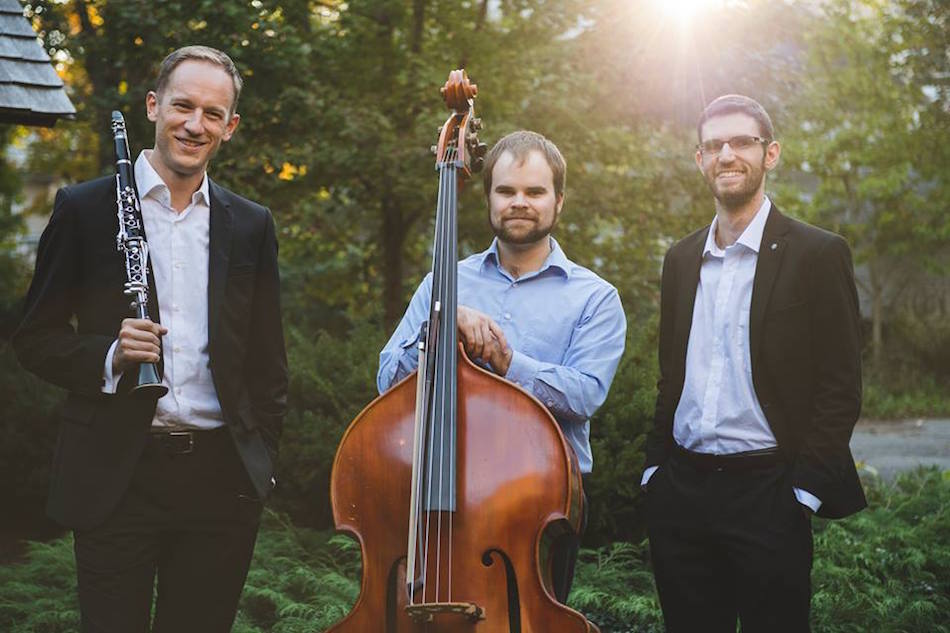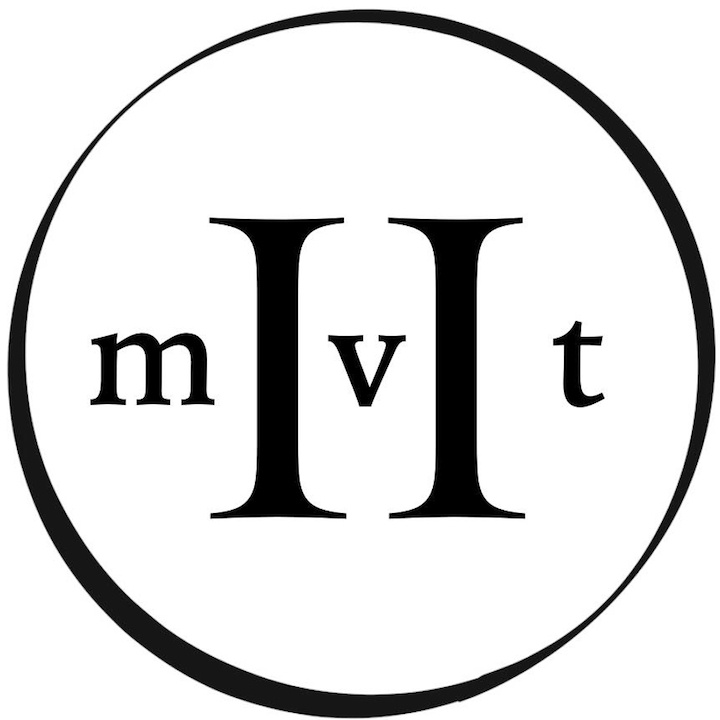
David Perry, Clarinetist and Founder; Sam Bobinski, Bassist and Marketing Director Yevgeny Yontov, Pianist and Artistic Director. Matthew Fried Photo.
David Perry pursed his lips and leaned slightly into his bass clarinet. The low, hissing sound of his breath carried clearly in the lofty, timber-roofed quiet of First Presbyterian Church. Air hesitantly issued out from the woodwind’s bell and became the first, few, lonesome bars of David Bruce’s 2008 Gumboots, part two in a Friday night concert by The Second Movement chamber music collective.

The group's logo. Courtesy The Second Movement.
Entitled “From Communism to Apartheid,” The Second Movement’s showcase—the first of the academic year—presented Bruce’s commentary on exploitative mining practices in South Africa, as well as a piano quintet by Soviet malcontent Dmitri Shostakovich.
Perry was joined onstage by violinists Mélanies Clapiès and Bora Kim, cellist Samuel DeCaprio, and violist Julia Clancy. Clancy added her own filament of sound to Perry’s opening notes. She came just shy of joining her part to his. The viola echoed Perry's clarinet so closely that the call and response fluttered together—two thin ribbons that alternately flew forward and snapped back, gliding around one another by near misses.
Yevgeny Yontov, Shostakovich pianist and architect of The Second Movement’s 2017-2018 season, explained the evening’s theme.
“We wanted do so something that has to do with our world now,” he said. “We wanted to do a season that was centered around pieces that were composed by minorities or oppressed peoples!”
Yontov went into further detail after the performances. Friday’s concert, he said, focused on works written for strings and one other instrument. Communism and apartheid fit together on their musical merits. Curation by instrument kept the per-concert ensemble size small.
“We have to be practical,” he admitted.
Gumboots featured a yearning, searching prelude and a cycle of up-tempo dances created after real-world choreography for a gold panner’s rubberized Wellington overshoe. Callous white mine managers found it easier to issue the titular ‘gumboots’ to their laborers than drain their flooded dig shafts. The Second Movement recited songs of workers’ resistance.
“It’s written about people who couldn’t speak for themselves,” said Perry.
When asked what The Second Movement was saying on their behalf, Perry answered: “We are here.” Programming and playing Gumboots, he added, was a “way to use what I’ve learned how to do to try and create the diverse and equitable world we want to live in.”
First Presbyterian’s intimate devotional setting framed and contained Gumboots excellently. The delicate elements in Bruce’s layered sonic landscape had the space and the silence to emerge slowly, embrace the crowd, and fade gently out.
Clancy’s methodical ground-line for the prelude’s last half seemingly came from miles away. She rendered it determinedly and deliberately, repeating a three-part gesture that defined an invisible trapezoid along her viola’s bridge. Bora Kim cut in, striking her violin with the wooden flat of her bow stick, keeping time on the cusp of hearing.
The first half’s outro scintillated with precious gems of fine motor-control and focus: a trembling, tenuous warble on violin; a faint, straining, scratchy whisper with barely the strength to follow Perry’s last notes on the clarinet.
The Shostakovich was bigger, brasher, and bolder than Bruce, but just as subtle.
“He had to play according to the rules,” said Yontov. The Soviet cultural establishment wanted music that was simple, that was tuneful. “If it was based on folk melodies—that was a bonus.”
Under Yontov’s direction, Clapiès and Kim threw their backs into the quintet’s scherzo. They feverishly hacked away at its jaunty violin passages. Second Movement strained the music grotesquely to give a glimpse of Shostakovich forcing a toothy grin at Pravda’s party critics. His sunny realist melodies protested too much, spiraling out excessively, subversively.
“Here,” said Yontov, ventriloquizing Shostakovich, “I’m giving you what you want, but I’m staying true to myself!”
Stifled and disinterested, Yontov indicated how sly Shostakovich buried his emotions in the quintet’s fugue and intermezzo. Yontov served up these stormy, alienated piano lines: all bassy and brooding. The intermezzo’s high, hollow, ceramic-sounding notes reverberated hauntingly through First Presbyterian.
“We can’t actually know what these figures were thinking,” Yontov said. He looked up and smiled. “But I’d like to believe they weren’t selling out!”